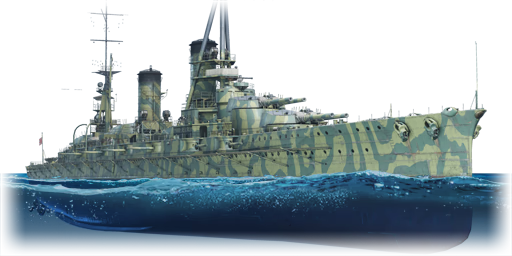Yamashiro (山城) was the second ship of the Fusō-class battleships of the Imperial Japanese Navy, laid down in November 1913 and commissioned in March 1917. Throughout the interwar period, she underwent several modernisations, enhancing her armament, armour, and superstructure, including the enlargement of her distinctive pagoda-style mast. Despite these upgrades, Yamashiro was considered inferior to newer battleships, limiting her active deployment. During World War II, she served mainly as a training ship and participated in troop transport missions until October 1944, when she became the flagship of Vice Admiral Shōji Nishimura's Southern Force. During the Battle of Leyte Gulf, specifically the Battle of Surigao Strait, Yamashiro was sunk after an engagement where she was focused by multiple US battleships, marking the last battleship-versus-battleship combat in naval history.
The Fuso-class, IJN Yamashiro, 1920 is a premium gift rank Japanese battleship introduced in Update "Kings of Battle", with an additional pre-order which opened on 18 October 2023, granting a unique title - "Oni no Yamashiro" - and a unique Kyoto Prefecture flag. These bonuses have not been obtainable since 31 October 2023, when the update was released and pre-orders closed. Yamashiro has six turrets with twin 356 mm cannons, which can fire an extremely powerful broadside of twelve 356 mm shells, something that no other vessel can match at her BR. Similarly, her secondary casemate guns are able to deal with destroyers and light cruisers, although they suffer from very limited accuracy. Finally, her anti-air defences and torpedoes are mostly symbolic, offering limited effectiveness. Compared to her tech-tree equivalent, she trades a lower BR for worse survivability, less accurate secondaries, and a much worse anti-air/anti-boat capability.









 2 x (450 / 600) %
2 x (450 / 600) % 
 2 x 202 %
2 x 202 % 
